
Flower Power: Hedging Flowering Plants for Year-Round Color and Vibrancy
Published: 21/02/2024 | Updated: 28/02/2024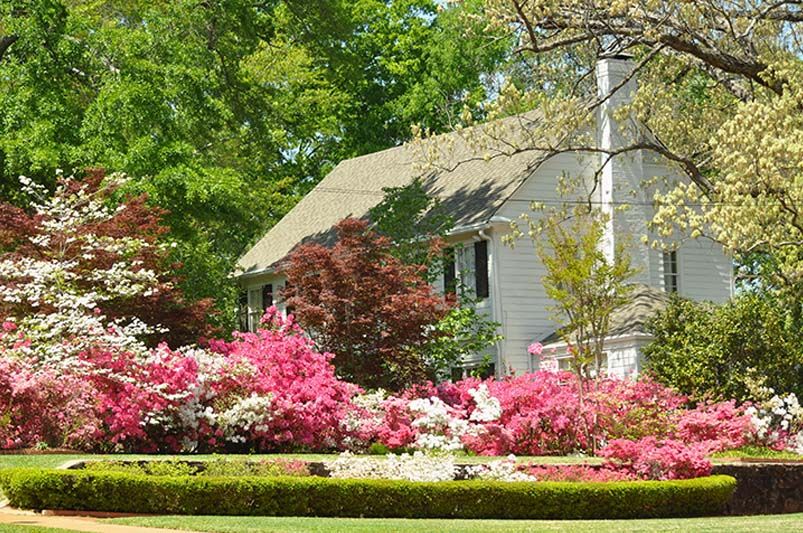
Hedging flowering plants allow you to create vibrant, colorful borders and screens in your garden that burst into bloom at different times of the year. Unlike regular hedging plants like boxwood or privet that offer dark green foliage, but little color, it gives you so much more visual interest. The flowers will attract butterflies and pollinators while the foliage provides structure, enclosure, and greenery when not in bloom. In this article, we will be talking about hedging flowering plants and how proper planning and care will keep flowering hedges healthy and help them thrive for years of beauty.


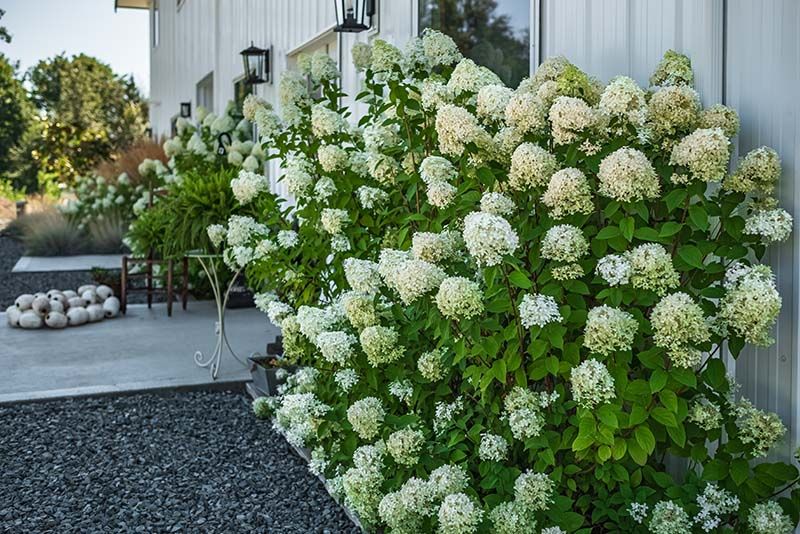
Popular Hedging Flowering Shrubs
Creating an everblooming hedge with shrubs that flower at different times is an excellent way to bring vibrant, colorful interest to your garden. The following flowering shrubs are top choices for hedges that blossom sequentially, giving you floral displays.
-
Hydrangeas: These classic flowering shrubs offer lush green leaves and beautiful clustered blooms. Different hydrangea species and cultivars bloom at different times, with some starting as early as spring and others flowering in summer or fall. Choose a combination of hydrangeas to extend the flowering season. Some top choices include panicle hydrangeas, bigleaf hydrangeas, smooth hydrangeas, and oakleaf hydrangeas.
-
Azaleas: Azaleas are prized for their abundant spring blooms that come in shades of pink flowers, red flowers, purple flowers, and white flowers. They have an upright shape that works well in a hedge. Plant encores and other reblooming azalea varieties to get blooms in spring, summer, and fall.
-
Spireas: These versatile, low-maintenance shrubs flower in late spring to summer. Varieties like bridal wreath spirea, gold flame spirea, and double spireas add billowy white, orange, or pink blooms to the hedge. Prune after flowering to encourage reblooming.
-
Rose of Sharon: Also known as altheas, Rose of Sharon offers bountiful, hibiscus-like flowers in late summer when many other shrubs have stopped blooming. It grows in vase or tree-like shapes that work for hedging.
-
Flowering quince: Early spring flowering with showy red, orange, pink, or white blooms. pruning keeps it contained. Combine with later blooming shrubs.
This selection provides diverse flower forms, colors, and bloom times for nonstop floral hedging beauty. Pair with evergreen shrubs for winter interest and a classic mixed hedge.
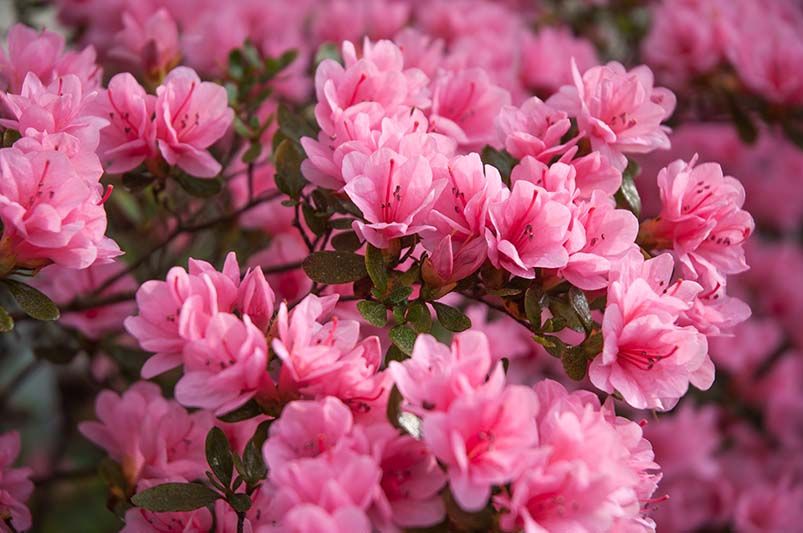
Choosing the Right Plants
When selecting flowering hedging plants, it's important to consider your climate, sunlight, and low-maintenance plant requirements to ensure success.
Climate
-
Evaluate your USDA Hardiness Zone and make sure to select varieties suitable for your region. Certain flowering shrubs like hydrangeas may require some winter protection in colder zones.
-
Pay attention to each plant's temperature tolerance, some may struggle with extremes of heat, cold, humidity, etc. Choose options matched to your area's typical conditions.
-
Consider your regional rainfall and soil moisture when picking plants. Drier climates may require more drought-tolerant choices that don't need constant watering to thrive.
Sunlight
-
Determine how much sun reaches your hedging area at different times of day. Note if the area gets full sun, partial sun, or shade.
-
Read plant tags and descriptions to find choices suited to your specific sunlight conditions. Some flowering shrubs need 6+ hours of direct sun to bloom well.
-
If you have a mix of sun and shade, look for flexible flowering plants that can handle both, or plan to use different varieties in each light condition.
Maintenance
-
Decide on the upkeep you are willing to provide - certain plants need frequent pruning and shaping, while others can be quite low maintenance.
-
Seek out compact, naturally dense varieties that won't need excessive shearing to keep them tidy and full. This reduces pruning tasks.
-
Look at the mature size and growth rates to gauge how much ongoing shaping your flowering hedge will require. Plan space between plants accordingly.
-
For lower maintenance, use informal flowering hedges vs tight, geometric shapes that require precision trimming.
By taking stock of your specific landscape conditions whole plant, and needs, you can narrow down the ideal flowering shrubs to provide you with beautiful, vibrant hedges all year round.
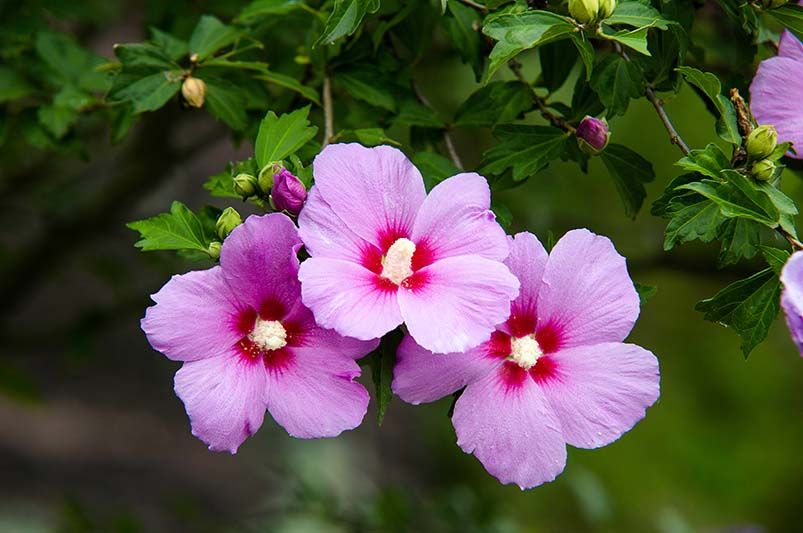
Preparing the Hedging Area
Proper preparation of the soil and spacing is crucial for flowering hedges to thrive. Here are some tips:
-
Test the soil pH and amend if needed. Most flowering shrubs prefer slightly acidic soil between 6.0-6.5 pH. Add sulfur or acidic compost to lower pH or lime to raise it.
-
Improve drainage if the soil is heavy clay. Adding organic material like compost or peat moss will help loosen the soil. Consider creating a raised planting bed for better drainage.
-
Remove any existing plants, roots, or debris. Eliminate perennial weeds.
-
Dig a trench as wide as the planned hedge and 12-18 inches deep.
-
Amend the soil by mixing in 2-4 inches of compost or well-rotted manure throughout the entire bed. This will enrich the soil with nutrients.
-
Space plants according to mature size, are usually 2-4 feet apart. Allow enough room for plants to grow and fill in.
-
Dig holes for each plant, wider than the root ball. Set the plant at the proper depth so the root flare is level with the ground. Backfill with native soil, tamping firmly around roots.
-
Water deeply after planting. Apply 2-3 inches of organic mulch around plants to retain moisture.
The flowering hedge is ready to grow and flourish with the soil prepared and plants properly spaced and planted. Check out our Blog section for more information about planting and caring tips.
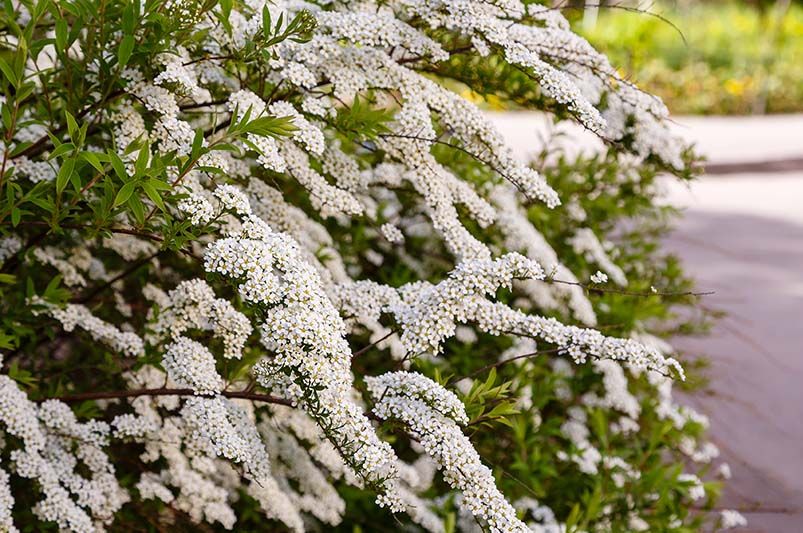
Planting and Initial Care
Once you have prepared the planting area and chosen your hedging plants, it's time to get them in the ground. The best time to plant them is in early spring or early fall when the temperatures are mild and there is less chance of stress to new plantings. When planting, dig holes that are twice as wide and just as deep as the root balls of your plants. Space holes 3-5 feet apart, depending on the mature size of the shrubs you have chosen. Carefully place each plant in its hole, keeping the top of the root ball level with the surrounding soil. Fill in around the root ball with your prepared soil mix and water thoroughly.
Proper watering is crucial during the first year as your new hedging plants establish themselves. Provide 1-2 inches of water per week, allowing the soil to dry slightly between waterings. Deep watering encourages deep roots. Mulching around plants with 2-4 inches of organic mulch helps retain soil moisture and moderates soil temperature. Be sure to weed diligently, as weeds will compete for water and nutrients. Also, watch for pests like aphids and scales. Address any issues promptly to keep plants healthy. With proper care during the first year, your new wood or flowering hedge should quickly establish and be on its way to providing beauty and privacy for years to come.
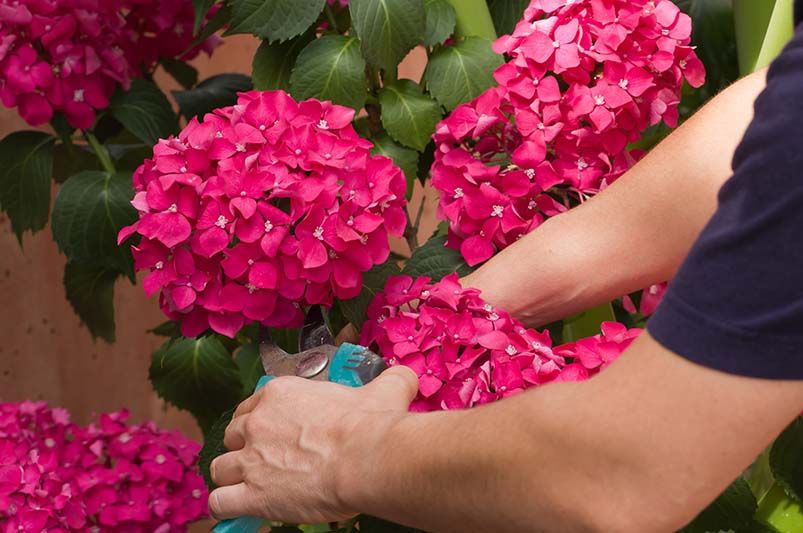
Ongoing Maintenance
Proper ongoing maintenance is key to keeping your flowering hedge healthy, vibrant, and blooming to its full potential. Here are some tips:
Pruning
-
Prune flowering hedges immediately after flowering. This encourages new growth and maximizes blooms for the next season.
-
Take out only 1/4 of the plant when pruning to avoid shock. Make cuts just above outward-facing buds.
-
For deciduous plants, cut back to 6 inches from the ground in late winter. For evergreens, trim as needed to maintain shape.
-
Use sharp, clean pruning shears to make clean cuts and avoid disease.
-
Remove any dead or damaged growth as needed to keep plants looking tidy.
Fertilizing
-
Apply a balanced fertilizer or compost in early spring to provide nutrients for the growing season.
-
Slow-release fertilizers can be applied in spring to provide nutrients over a longer period.
-
Avoid high nitrogen fertilizers, which lead to leafy growth instead of flowers.
-
Follow package instructions carefully and do not over-fertilize.
Troubleshooting
-
If plants fail to bloom, it could be due to improper pruning, over-fertilization, or other stresses.
-
Prune off any diseased or pest-infested areas. Treat diseases and pests promptly to avoid spreading.
-
Ensure proper sunlight, soil pH, and moisture to keep the hedge healthy. Address issues like drainage or compaction.
-
Protect plants from extreme cold and wind exposure in winter if needed.
With proactive care and maintenance, your flowering hedge can thrive year after year, providing beauty and interest no matter the season.
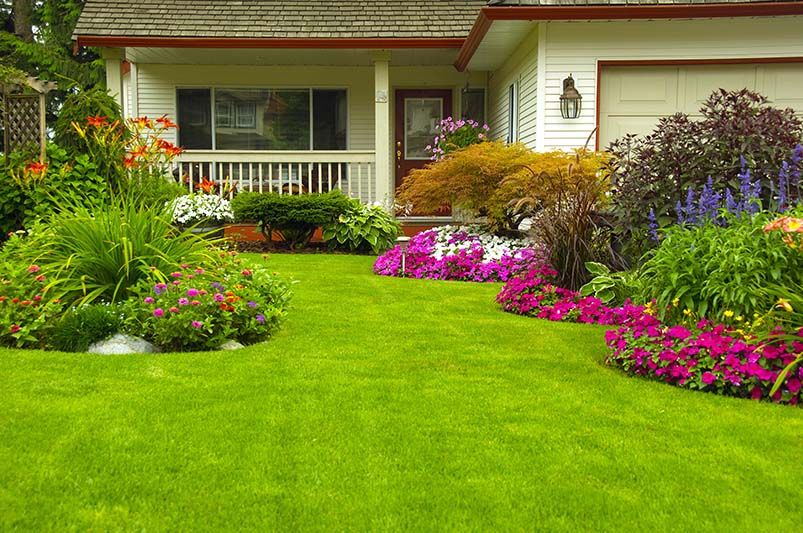
Getting Creative With Design
Hedging plants allow for lots of creativity when it comes to design. You can play with plant heights, textures dense growth, shapes, and mixing varieties to create unique hedges that provide visual interest year-round.
Plant Heights
-
Mix taller shrubs like lilacs or viburnum with lower-growing plants like spirea or potentilla for dimension.
-
Gradually transition from shorter to taller plants as you move down a hedge line.
-
Alternate between heights to make a wave-like pattern.
Textures
-
Combine fine-textured plants like heathers with coarse, bold foliage like barberries.
-
Use wispy grasses alongside broadleaf evergreens.
-
Contrast fuzzy leaves with smooth, shiny ones.
Shapes
-
Incorporate mounded, spreading shrubs with upright, columnar ones.
-
Use round and oval forms with spiky or spire-like options.
-
Mix irregular free-form growers with geometric boxwoods.
Mixing Varieties
-
Blend different flower colors for eye-catching interest.
-
Include evergreens with deciduous plants that drop leaves.
-
Utilize a sequence of staggered bloom times for continuous color.
-
Combine fragrant flowers and non-fragrant plants.
-
Vary growth habits from compact and restrained to loose and flowing.
The options are endless when hedging with flowering shrubs. Feel free to get creative and discover new combinations of native shrubs that keep your hedge lively and alluring year-round. Focus on plant diversity in height, texture, shape, and habit for the most compelling designs.
Extending the Blooming Season
One of the best parts of having flowering hedges is the gorgeous, vibrant colors they provide in your garden. To get the maximum enjoyment from your flowering hedge and have it bloom through more seasons, consider incorporating varieties with different bloom times. This way, when one plant finishes flowering another will just be starting full bloom.
Staggering the bloom times of different flowering shrubs in your hedge allows you to extend the colorful display. Focus on choosing early, mid-, and late-season bloomers that complement each other. For example, combine late winter blooms like witch hazel with spring bloomers like viburnum and weigela. Then add in summer flowering shrub plants like butterfly bush and rose of Sharon for another burst of color.
For the longest flowering hedge possible, select varieties hardy to your climate and taller varieties that can withstand colder temperatures. Cold hardy plants like spirea, potentilla, and hydrangea can endure frosty weather and keep blooming intermittently into fall. This provides bright pops of color leading right up to the first hard frost.
With the right combination of blooming times and cold hardy varieties, you can create a flowering hedge that delights the eye from late winter through fall. Stagger those two in-bloom periods for maximum impact.
Overwintering Tips
Overwintering flowering hedge plants properly is crucial for ensuring their health and longevity. Here are some key tips for protecting your hedge through the winter:
Winter Protection
-
Install a windbreak made of burlap or plastic sheeting on the windward side of the hedge to protect against harsh winds and freezing. Stake down firmly.
-
Apply a 2-4 inch layer of bark mulch or straw around the base of plants to insulate roots from temperature fluctuations.
-
For potted plants, group together and wrap or cover with burlap or frost blankets. Move to a protected area if possible.
Watering
-
Continue watering throughout winter during warm spells and if rainfall lacks moist to wet soil. Prioritize whenever the soil is dry 2-3 inches down.
-
Potted plants especially need vigilant watering year-round. Ensure pots drain well to prevent root rot.
-
Reduce watering frequency but don't allow plants to completely dry out. Continue until the ground freezes.
Properly overwintering flowering hedges will maximize their health, hardiness, and longevity. With the right care, your hedge will thrive and delight year after year.
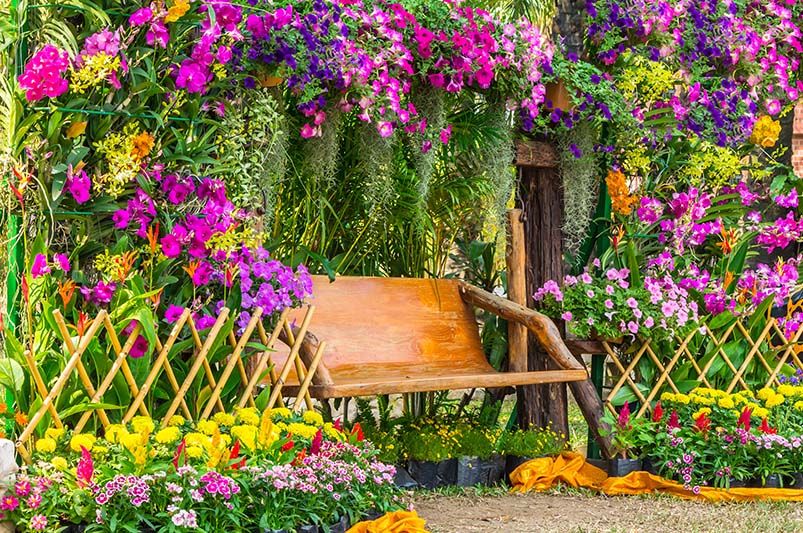
Enjoying Year-Round Beauty
A flowering hedge that blooms from spring through fall provides a feast for the eyes and brightens up every season. After months of planning and preparation, it's time to step back and enjoy your vibrant, colorful hedge. Stand outside on a spring morning, coffee in hand, and take in the sweet floral scents as your hedge bursts into bloom. Butterflies and hummingbirds will soon visit the nectar-rich flowers. In summer, dine al fresco surrounded by the bright blooms and lush greenery of your flowering border. As the hedge continues flowering into fall, cut some stems to create stunning floral arrangements that will energize your home's interior.
The vibrancy and energy of your flowering hedge transform your outdoor space into a sanctuary. No matter the season, you'll find yourself drawn outside to relax and surrounded by natural beauty. The year-round color rejuvenates your spirit with its promise of renewal. When neighbors pass by, they'll compliment your gorgeous, ever-blooming hedge. You'll take pride in knowing your creative vision and care helped the plants thrive. A flowering hedge brings joy, supports local wildlife, and showcases your gardening skills for all to admire. Take time to appreciate your hedge plant blooms each season and already start dreaming up ideas to extend its beauty next year.
Make sure to check out Shrubhub for affordable and unique landscaping options.


